Land Invertebrates
Media
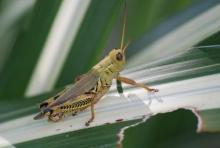
Species Types
Scientific Name
Melanoplus differentialis
Description
The differential grasshopper is familiar to most Missourians. Originally it lived only in wet meadows and creek bottomlands, but with the spread of farms, it has become a pest of many food crops.
Media
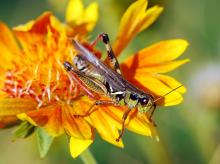
Species Types
Scientific Name
Melanoplus femurrubrum
Description
The red-legged grasshopper is a type of short-horned grasshopper common in Missouri. It reaches about 1 inch in length and is often seen flicking or flying away in open habitats.
Media
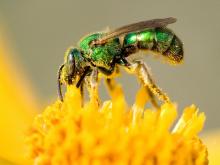
Species Types
Scientific Name
More than 500 species in North America north of Mexico
Description
Missouri has many species of halictid bees, or sweat bees. Some are solitary, but a number show different levels of social behavior. They're named for their attraction to perspiration, which offers them precious moisture and salts.
Media
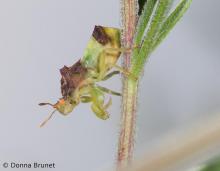
Species Types
Scientific Name
Phymata spp. and others in subfamily Phymatinae (ambush bugs)
Description
Ambush bugs are a subfamily of assassin bugs. They’re chunky, small insects with powerful grasping forelegs. They hide motionless in flowers waiting for prey to venture near.
Media
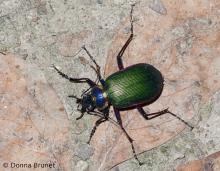
Species Types
Scientific Name
About 2,400 species in North America north of Mexico
Description
Ground beetles are a family of mostly nocturnal or light-shunning beetles that tend to be shiny black and have grooved wing covers. This group also includes tiger beetles, however, which includes many colorful daytime fliers.
Media
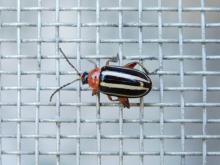
Species Types
Scientific Name
About 2,000 species in North America
Description
Leaf beetles, or chrysomelid beetles, are members of a large, diverse, often very colorful beetle family. As the name suggests, they eat leaves and other plant parts and are common on foliage.
Media
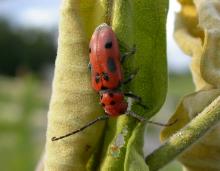
Species Types
Scientific Name
About 1,000 species in North America north of Mexico
Description
Longhorned beetles are elongated and cylindrical, with antennae that are at least half the length of the body — sometimes much longer. The larvae are grubs that bore in wood or other plants. Some are serious pests.
Media
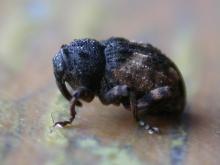
Species Types
Scientific Name
About 2,500 species in North America north of Mexico
Description
Weevils are plant-eating beetles with a characteristic long, down-curving snout. The antennae are clubbed and elbowed. There are thousands of weevil species.
Media

Species Types
Scientific Name
About 60 species in North America north of Mexico
Description
The nymphs of spittlebugs and froghoppers are famous for hiding in small foamy masses of fluid. The “spit” conceals them as they suck juices from plant stems. The adults resemble leafhoppers.
Media
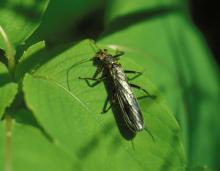
Species Types
Scientific Name
Nearly 700 species in North America north of Mexico
Description
Stoneflies have a lot in common with mayflies, caddisflies, dragonflies, and dobsonflies: They begin life as aquatic larvae, then molt and become winged adults. Many fish find stoneflies irresistible, and anglers know it.
See Also



Media

Species Types
Scientific Name
Cisseps fulvicollis
Description
The yellow-collared scape moth is more often “orange-collared.” And whether you think it looks more like a firefly or a wasp, it’s still a moth!
Media

Species Types
Scientific Name
Nearly 150 species in North America north of Mexico
Description
Slim, delicate plume moths are instantly recognizable by their T-shaped silhouette, long legs, and muted shades of tan and brown. It can be hard to separate the various species.
Media

Species Types
Scientific Name
Pyrrharctia isabella
Description
Not many people know the adult Isabella tiger moth when they see one, but we’re all acquainted with its caterpillar, the woolly worm, or woolly bear.
About Land Invertebrates in Missouri
Invertebrates are animals without backbones, including earthworms, slugs, snails, and arthropods. Arthropods—invertebrates with “jointed legs” — are a group of invertebrates that includes crayfish, shrimp, millipedes, centipedes, mites, spiders, and insects. There may be as many as 10 million species of insects alive on earth today, and they probably constitute more than 90 percent all animal species.





















